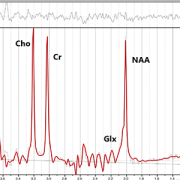Altered blood flow may contribute to preemie brain injuries

A Children’s National research team for the first time mapped abnormalities in blood flow that may contribute to brain injury suffered by preterm infants.
Advanced noninvasive imaging permitted Children’s National Health System researchers to measure the lasting impact of abnormalities in blood flow on the immature brains of premature babies. Blood flow to the brain, or perfusion, has been studied previously to understand its role in other health conditions, but this is the first time a research team has mapped how these changes may contribute to brain injury suffered by babies born before 32 weeks’ gestation.
Preterm birth is a major risk factor for brain injury. The prospective study examined infants weighing less than 1,500 grams who were born prior to 32 gestational weeks.
Of 78 infants studied, 47 had structural brain injuries categorized as either mild or moderate to severe, and 31 had no brain injury. While global cerebral blood flow decreased with advancing postnatal age, the blood flow decreased more significantly among preterm infants with brain injury, says Eman S. Mahdi, M.D., M.B.Ch.B. Dr. Mahdi is a pediatric radiology fellow at Children’s National and lead author of the abstract.
“In addition to differences in global brain blood flow, we saw a marked decrease in regional blood flow to the thalamus and the pons, regions known to be metabolically active during this time,” Dr. Mahdi says. The thalamus helps to process information from the senses and relays it elsewhere within the brain. Located at the base of the brain, the pons is part of the central nervous system and also is a critical relay of information between the cerebrum and cerebellum. “These regional variations in blood flow reflect vulnerability of the cerebral-cerebellar circuitry,” she adds.
The Radiological Society of North America (RSNA) recognized Dr. Mahdi with its Trainee Research Prize. She presented the work, “Cerebral Perfusion Is Perturbed by Preterm Birth and Brain Injury,” during the RSNA Scientific Assembly and Annual Meeting, held from Nov. 27 to Dec. 2.
The findings point to the need for additional research to explore how cerebral blood flow trends evolve as preemies grow older and whether abnormal blood flow is linked to differences in health outcomes. In addition, the technique used by the research team, arterial spin labeling perfusion imaging – a type of magnetic resonance imaging – represents a useful and non-invasive technology for identifying early cerebral perfusion abnormalities in preterm infants, says Catherine Limperopoulos, Ph.D., director of the Developing Brain Research Laboratory at Children’s National and abstract senior author.










